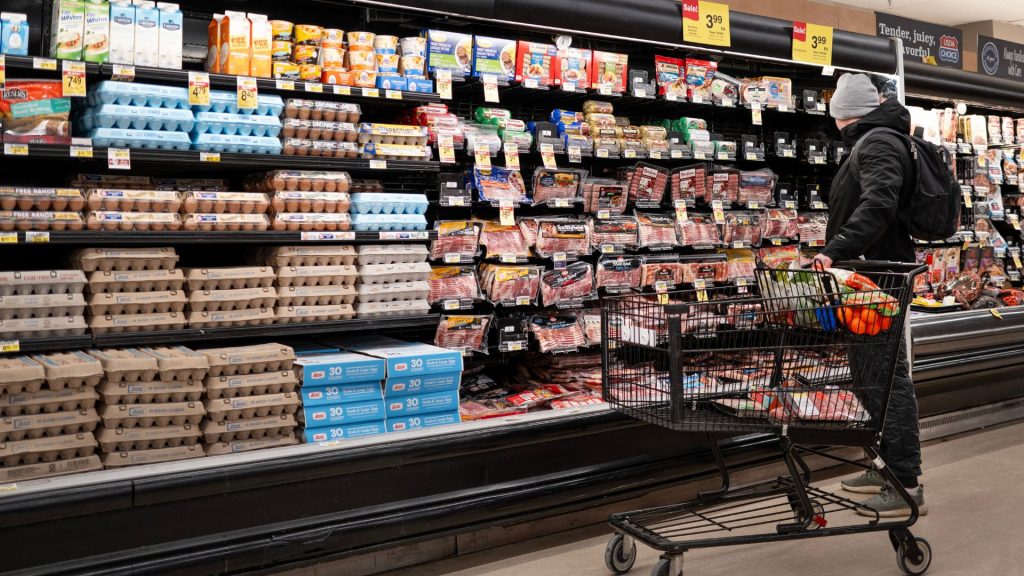New surveys show tariffs’ impacts may still be around the corner

With the stock market at record highs and inflation comparable to 2024, the U.S. economy appears to be rolling along despite President Donald Trump’s tariff plan. However, two new surveys found that the effects of those policies may be right around the corner.
The first survey is the Organization for Economic Cooperation and Development’s (OECD) biannual interim economic outlook, which was published Tuesday. The other was The CFO Survey by Duke University.
What did the OECD survey find?
The OECD’s survey forecasts that U.S. growth in 2025 will fall a full percentage point from its 2024 level. If this rate continues, it would amount to the U.S. missing out on $2.2 trillion of goods and services by 2035, according to the survey.
It also forecasts the U.S. gross domestic product will grow about 1.8% in 2025 and 1.6% in 2026 — significantly less than 2024’s rate of 2.8%. The survey suggests the slowdown in GDP growth is because of Trump’s tariff and anti-immigration policies.
Despite the OECD’s grim growth projections, the U.S. economy has stayed relatively strong. The stock market has hit record highs and inflation has stayed about the same as it did during the last year of the Biden administration, with the consumer price index rising 0.23% so far in 2025.
Since Trump took office in January, the producer price index has dropped by about 36%. This index measures changes in American business expenses, excluding imports. However, the experimental index from the Bureau of Labor Statistics does include those expenditures, and it shows about the same thing.
Analysts say the relatively stable CPI and lower PPI under the Trump administration are surprising since Trump has more than tripled the average effective tariff rate to nearly 12% on about $2.2 trillion worth of imports. This would be expected to cause elevations in the CPI and PPI, but so far has not. According to the OECD, this is because of Trump’s delayed implementation of his tariff plan.
Why isn’t the US feeling the effects yet?
Despite announcing many of the tariffs on April 2, Trump postponed them for months. They eventually took effect on Aug. 7, which means the U.S. has not felt the full effects yet, according to the OECD.
However, some businesses have begun to feel the impacts. An August survey by the Dallas Federal Reserve found 60% and 70% of Texas retailers and manufacturers, respectively, said Trump’s tariffs were negatively affecting their businesses.
In July, NPR reported that corporations were having a “weird tariff summer,” with some big companies, like car manufacturers, experiencing “real financial pain” from Trump’s plan.
Trump’s tariff plan faces potential reversal, either by his own decision or from the Supreme Court’s review of its constitutionality.
What did The CFO Survey say?
Duke University’s CFO Survey found tariffs were responsible for a third of the inflation the U.S. is currently facing. That means the current rate of 2.9% would be about 2% without Trump’s tariffs.
The survey also argued that tariffs would not be a one-time price adjustment, as the Trump administration said. CFOs estimate tariffs will account for about a quarter of price increases next year.
“This isn’t a one-time thing,” John Graham, a finance professor at Duke’s Fuqua School of Business and the director of The CFO Survey, told CNN. “It is still going to be happening in 2026. This is going to be a long, drawn-out affair.”
Graham also said these price hikes could continue into 2027. However, the CFO survey did not cover 2027.
Nearly a quarter of businesses said tariffs will force them to cut spending this year. But the Trump administration said tariffs would have the opposite effect. In a statement to CNN, the White House said Trump’s agenda is cutting costs and increasing incomes for American families and businesses.
“President Trump’s tariffs are boosting demand for American workers and American products — from spurring trillions in investment commitments to hire and make in America to securing historic trade deals that create unprecedented foreign market access for American exports,” White House spokesman Kush Desai told CNN.
But the latest employment report indicated that only 22,000 jobs were added in August — more than 50,000 fewer than expected. The report also stated the economy lost 13,000 jobs in June, the first time in nearly four years.
Will tariffs increase prices for consumers?
The CFO Survey also found that tariffs are making it more expensive for businesses to import goods. On average, CFOs estimate their costs will increase by about 4.4% this year, with about 1.7 percentage points of that driven by tariffs. CFOs expect to pass a significant portion of increased costs to consumers.
Several major companies announced plans to increase prices because of tariffs, like Walmart, Target, Nike and Procter & Gamble. The survey found that price increases this year are expected to reach 3.9%, with tariffs accounting for 1.3 percentage points.
Fed Chair Jerome Powell said that the Fed anticipates inflation will continue to rise but “maybe not as high” as expected. He noted that the price of goods generally fell over the last 25 years, outside the COVID-19 pandemic. However, that changed this year after Trump took office, likely from tariffs.
Certain goods have increased dramatically. Coffee, for instance, was nearly 21% higher than the same month last year.
There is data to back up that consumers will pay for most tariffs, according to CNN. White House economist and new Federal Reserve governor Stephen Miran has said that he expects exporting nations will lower their selling prices to absorb the tariff costs. If that were happening on a consistent basis, U.S. imports should be falling, However, they are not. Import prices rose 0.3% in August, according to BLS data.
“The tariffs are not, mostly not, being paid by exporters,” Powell said at a press conference on Sept. 17.
The survey did have some good news. The overall outlook for the U.S. economy improved among CFOs since the April-to-June period. It also found that there was a modest dip in expectations for cost and price increases this year. The CFO survey suggests this may be because some businesses have yet to see the impacts from tariffs they were bracing for. However, it could be that some businesses are now expecting these cost increases to take place in 2026.
The post New surveys show tariffs’ impacts may still be around the corner appeared first on Straight Arrow News.





